Middle childhood (5–12)
On this page
Children aged 5–12 make up the ‘middle childhood’ developmental stage. This age group tends to be in primary school, and typically spend more time engaging in physical activities such as organised sports or playing on playground equipment (ASC 2018). Socially, children at this age are often influenced by their peers and may engage in risky behaviours to fit in or impress their friends (Morrongiello & Sedore 2005).
Within this developmental stage, children are split into age groups 5–9 and 10–12 for analysis due to differences in injury mechanisms.
Children aged 5–9
Causes
Children aged 5–9 are more likely than adults to be hospitalised for injuries caused by drowning and submersion. For this cause, boys make up the majority of cases (Figure 26). This age group was 2.8 times more likely than adults to be hospitalised (3.0 and 1.0 per 100,000 respectively). For girls, this increases to 3.2 times (1.9 and 0.6 per 100,000 respectively). Nearly 3 in 5 of these injury cases occurred in a swimming pool (58%).
Figure 26: Injury hospitalisation rate ratios of children aged 5–9 compared to adults, and sex demographic proportions, by selected external cause, Australia, 2021–22
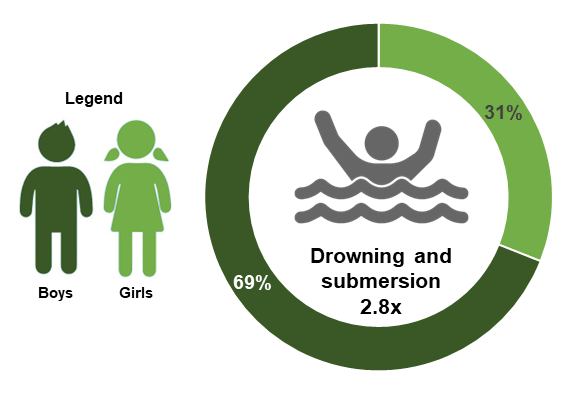
Some causes of injury are more prevalent in children compared to adults only in one sex. When comparing girls aged 5–9 with women, girls were:
- 1.4 times more likely to be hospitalised for an injury caused by contact with objects
- 1.3 times more likely to be hospitalised for an injury due to thermal causes.
Nature of injuries sustained
Children aged 5–9 experience higher rates of injury ED presentation than adults for certain injury types. This age group was 1.9 times more likely to have an ED presentation for a fracture (Figure 27). Over 3 in 5 fractures presenting to the ED involved the shoulder and upper limb (62%).
Injuries involving a foreign object (through orifice) were also prevalent in this age group, and they were 1.8 times more likely to have an ED presentation and 1.5 times more likely to have an injury hospitalisation. Over half of these hospitalisations were for a foreign body in the ear (54%).
Figure 27: Selected rate ratios of injury emergency department presentations and hospitalisations among children aged 5–9, by type of injury, 2021–22
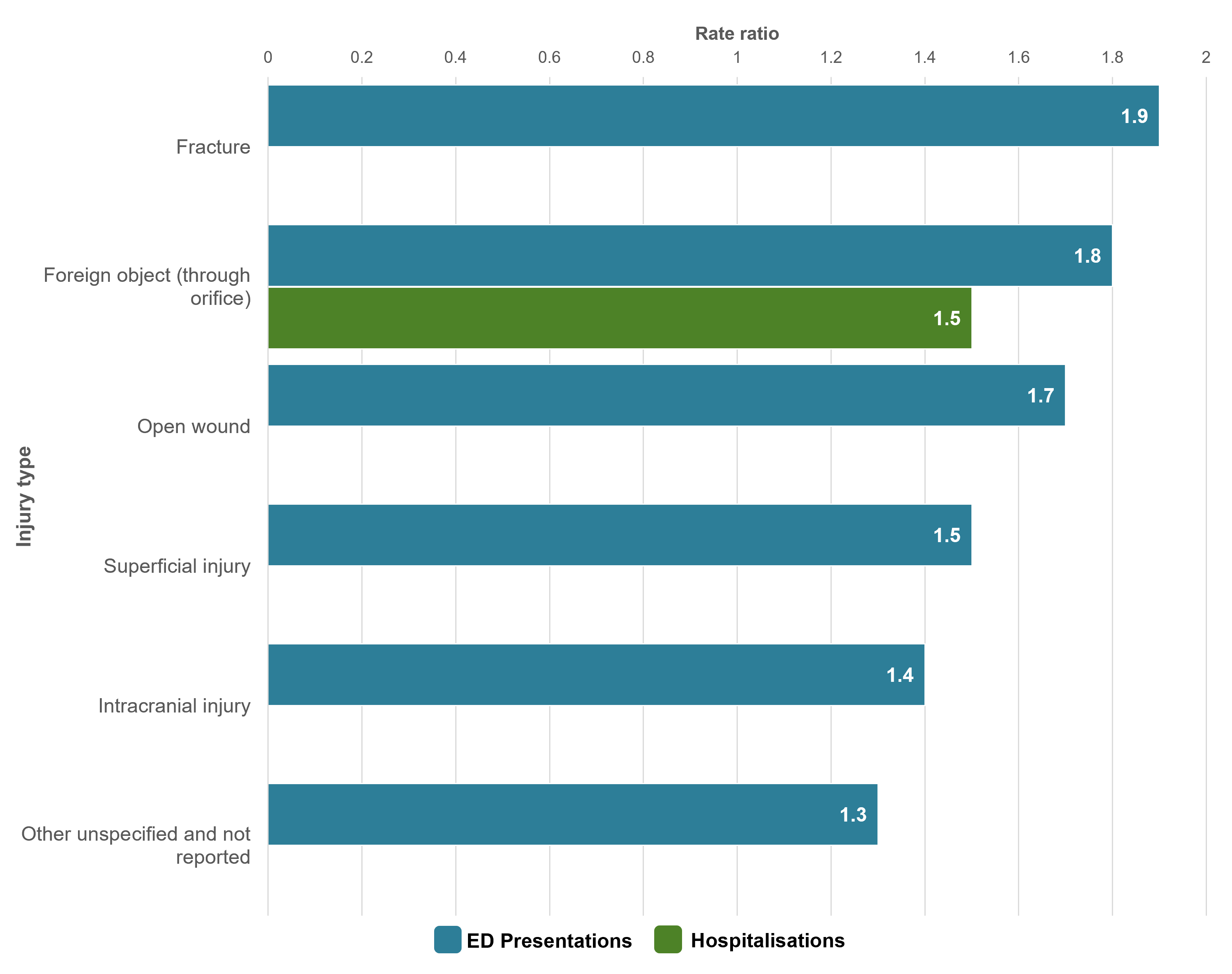
Some types of injury were more prevalent in children compared to adults only in one sex. When comparing girls aged 5–9 with women, girls were more likely to have an ED presentation for a:
- crushing injury (1.8 times)
- burn (1.3 times)
- soft-tissue injury (1.3 times).
For hospitalisations, girls were more likely than women to be admitted for a crushing injury (1.8 times) or a burn (1.4 times).
The sites of injury for which children aged 5–9 were more likely than adults to have an ED presentation or hospitalisation are shown in Figure 28.
Figure 28: Selected rate ratios for emergency department presentations and hospitalisations among children aged 5–9, by site of injury, Australia, 2021–22
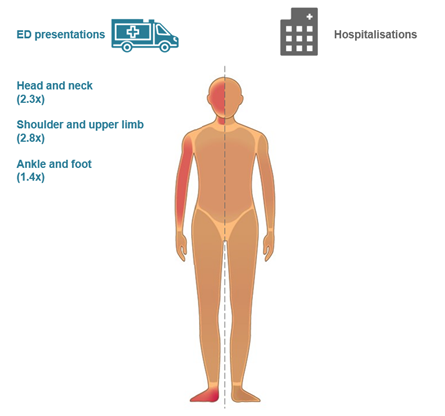
Additionally, girls were 1.6 times more likely to have an ED presentation for an injury to the wrist and hand.
Children aged 10–12
Causes
Children aged 10–12 had no causes where they experienced significantly higher rates of injury compared to adults.
Nature of injuries sustained
Children aged 10–12 experience higher rates of injury ED presentation than adults for certain injury types. This age group was 2.7 times more likely to have an ED presentation for a fracture (Figure 29). 45% of these fractures presenting to the ED involved the shoulder and upper limb.
Figure 29: Selected rate ratios of injury emergency department presentations among children aged 10–12, by type of injury, 2021–22
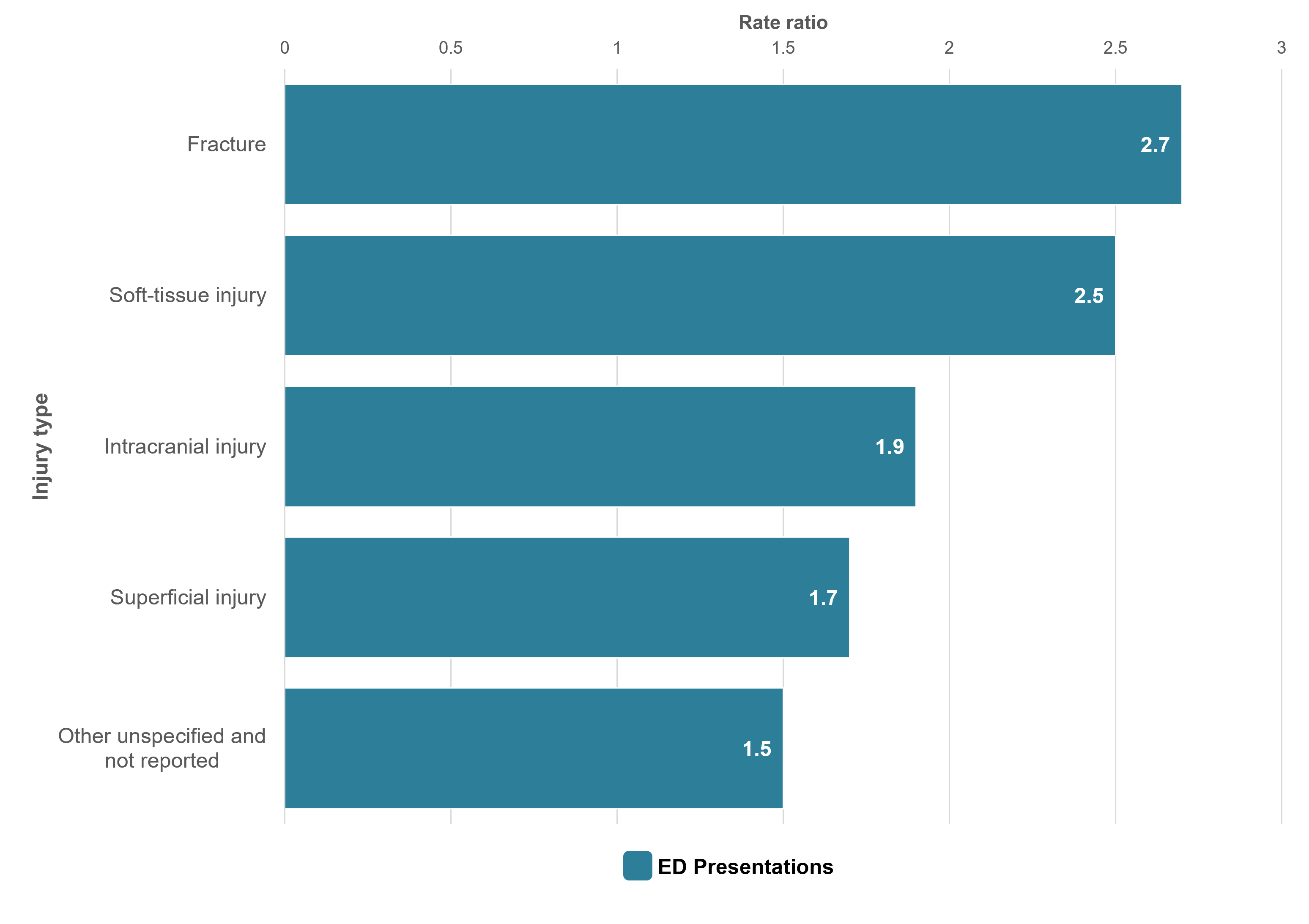
Additionally, girls are 1.3 times more likely than women to be hospitalised for a burn.
The sites of injury that children aged 10–12 are more likely than adults to have an ED presentation or hospitalisation are shown in Figure 30.
Figure 30: Selected rate ratios for emergency department presentations and hospitalisations among children aged 10–12, by site of injury, Australia, 2021–22
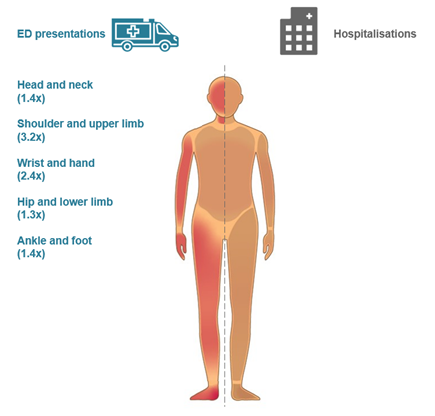
Boys were also 1.3 times more likely than men to be hospitalised for an injury to the shoulder and upper limb.
ASC (Australian Sports Commission) (2018) AusPlay Focus: Children’s Participation in Organised Physical Activity Outside of School Hours, ASC, Australian Government, accessed 21 March 2024.
Morrongiello B & Sedore L (2005) The influence of child attributes and social-situational context on school-age children's risk taking behaviors that can lead to injury, Journal of Applied Developmental Psychology 26(3), doi: 10.1016/j.appdev.2005.02.003.


